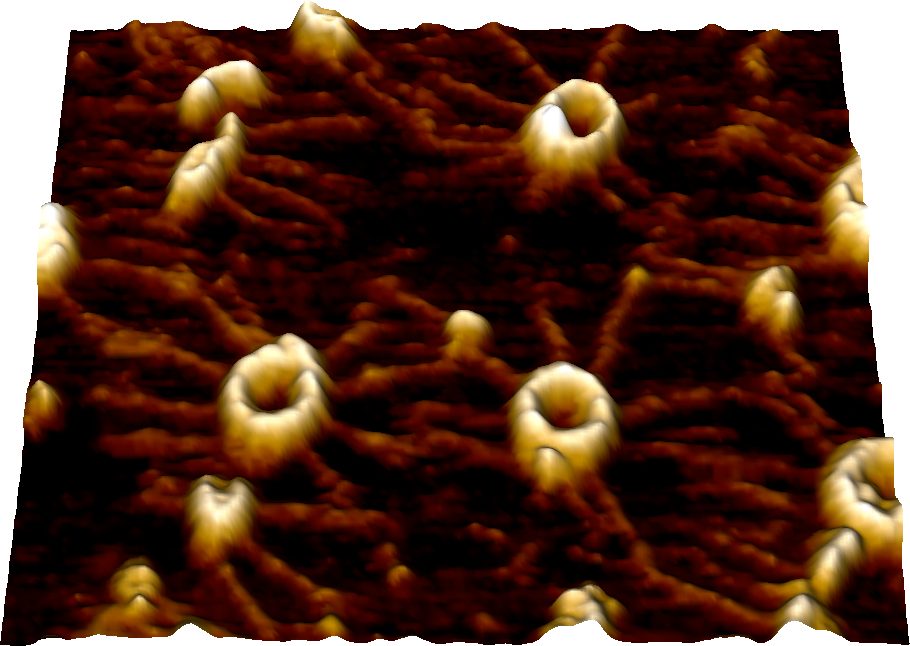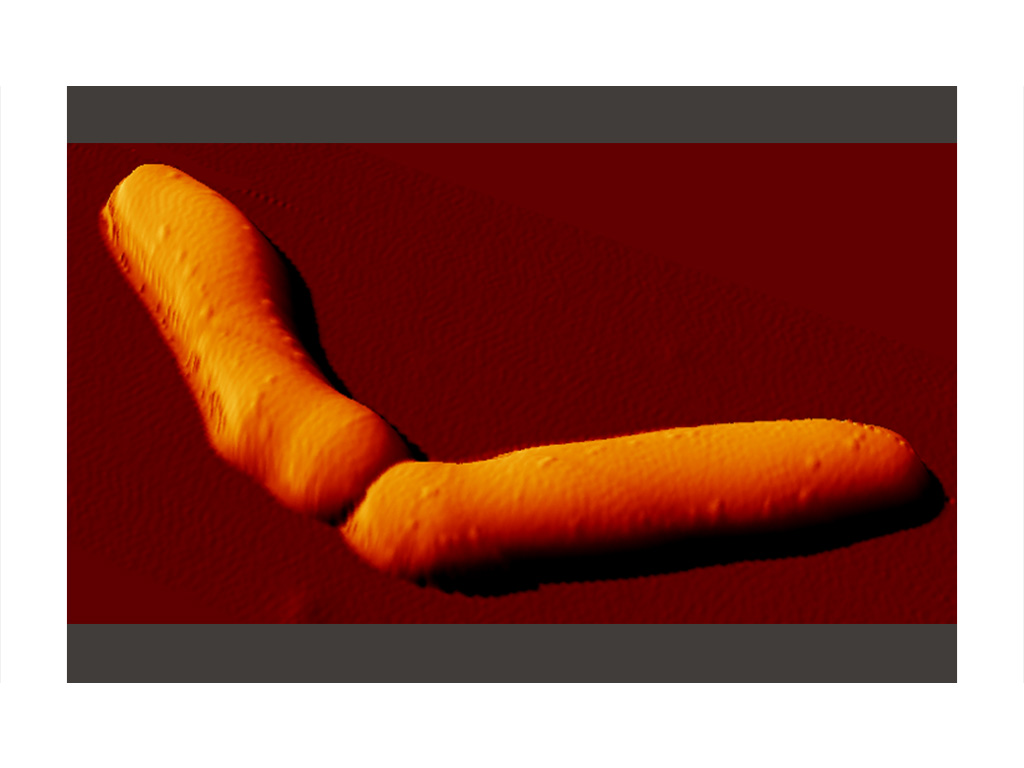At its core level, biology is a nanoscale science. The AFM can be used in fluid and is thus one of the most powerful tools available for directly studying biology at the nanoscale. In addition, it is a contact technique and can thus give important information about a sample’s mechanical properties. For example, we used the tool to discover that bacterial cell division is controlled by both enzymatic activity and mechanical forces.

HS-AFM Imaging of Protein Assembly and Dynamics
Many biological structures are assembled and disassembled in a dynamic fashion to fulfil their function. To understand the biogenesis of macromolecular structures, it is essential to observe such kinetics in real time with single-molecule resolution. Using our homo-build HS-AFM, we study the assembly and dynamics of single proteins: SAS-6 proteins, membrane attack complex (MAC) oligomerize…

Imaging Live Bacteria
Bacteria are micrometer-scale living organisms responsible for deadly diseases such as tuberculosis (still infecting 20% of the world population). We are studying the growth and division of Mycobacteria, a genus of Actinobacteria including M. smegmatis and M. tuberculosis.